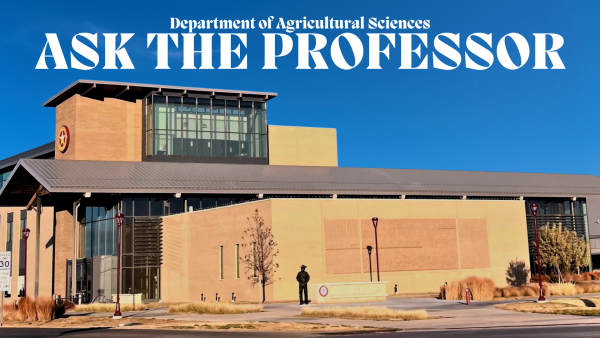Behind the major with Dakota Hacker: learning to love nature
Dakota Hacker is a junior working towards a bachelor of science while majoring in wildlife biology here at West Texas A&M University. Hacker is from Houston, Texas, and has found his passion by coming to WT and taking advantage of the opportunities the campus offers to him.
Hacker’s passion for pursuing wildlife biology started after taking an environmental class during his senior year of high school. Once the class began discussing wildlife and its relationship to the environment, Hacker was immediately captivated and knew he wanted to pursue wildlife biology as a career..
“My favorite thing about being a wildlife biology major is definitely the hands-on experience and the field trips,” Hacker said. “However, the worst part would have to be how little staff we have. I feel like some of our professors can feel a little swamped with the lack of staff, but they care so much about it that you don’t really see them feel that way.”
The wildlife biology major is composed of a handful of students pursuing the degree. Things can become overwhelming with a few professors to cover the number of classes the students require.. WT is one of the only schools that offer wildlife biology, with West Texas being a central location for habitat and humanities. It would be great to see WT expand its major and provide students with more opportunities.
“I’ve gotten a lot more hands-on experience than I would have gotten at a bigger university,” Hacker said. “I’ve gone to wildlife management areas and have been able to sample their habitat. I’ve also been able to go to chronic wasting disease (CWD) testing on deer, which is chronic wasting disease on deer with the Texas Parks and Wildlife Department (TPWD), which is not an opportunity you’d get at a bigger university.”
TPWD defines CWD as “a neurological disease in deer, elk, moose, and other members of the deer family.” The disease affects members of the deer family by damaging their brain and spinal cord, which causes behavioral changes and death. While there have not been any reports of a person eating something with CWD, a human or predator would ultimately die.
“I’m a co-team member on a muskrat project with Dr. Matlack,” Hacker said. “We are currently looking at the muskrat populations in Thompson Park, in Amarillo and Buffalo Lake in Umbarger. We just found two drainage ditches that were thought not to hold muskrats, but we found proof that they are there.”
Being a part of the research project involving muskrats interests Hacker in the analytical and research side of wildlife biology, which is critical information to help mammalogists who are scientists that study the biology of mammals.
“I am a part of the wildlife society, which is a campus organization where we meet on Thursdays twice a month,” Hacker said. “We get to learn and hear from a bunch of people in the field about their experiences and ways we can make ourselves better biologists.”
Aside from other majors, a unique part of wildlife biology is that they get to travel to gain first-hand experience with animals. After college, Hacker wants to be a wildlife ecologist who works with habitat management to work with multiple species.
Hacker believes a critical part of being in college is getting to know your professors.
“You should definitely get to know your professors and show them you really enjoy what you are learning because it creates connections, and they can help provide you opportunities you may not have gotten without them.”











